2020 BMW S1000RR Review - First Ride

A good bike, choked by Uncle Sam
The 2020 BMW S1000RR is what happens when government regulations ruin what is otherwise a good motorcycle. If you’ve been paying attention to the S 1000 RR (Yes, that’s its technical name, with spaces between letters and numbers. I’m scrunching them all together from here on out.), you’re already aware it’s been available in Europe for some time as a 2019 model year – and the reviews are raving. But now it’s slowly trickling into US dealers as a 2020 model, and this review won’t be quite as amazing – and it’s not entirely BMW’s fault. I wasn’t sure why there was a discrepancy, but after talking with some other journos who have ridden the European version, I think I know why. More on that later.
2020 BMW S1000RR
| Engine | 18.0/20 |
| Suspension/Handling | 12.0/15 |
| Transmission/Clutch | 10.0/10 |
| Brakes | 8.75/10 |
| Instruments/Controls | 5.0/5 |
| Ergonomics/Comfort | 9.0/10 |
| Appearance/Quality | 9.0/10 |
| Desirability | 8.0/10 |
| Value | 9.0/10 |
| Overall Score | 88.75/100 |
On paper at least, the 2020 BMW S1000RR has all the right upgrades a full makeover, 10 years in the making, deserves. First and foremost, the asymmetrical headlights are gone! While half the room is rejoicing (myself included), others are surely crying. Alas, time and fashion ultimately move on, and from the outset of the redesign, S1000RR global brand ambassador Nate Kern, says BMW had two goals: to make the new model at least one second faster than the old bike around any racetrack and to lose 25 pounds. It’s interesting to note that a bump in power wasn’t a specific target, but in these days of Ducati Panigale V4s and Aprilia RSV4 1100s, maybe that’s just a given. Of course, simply bumping power is one thing – making more usable power is another.
So, let’s get straight to it: BMW did a masterful job in its complete revamp of the S1000RR engine. Nothing has been carried over from before other than the inline-Four cylinder configuration. Engine specs are basically what you’d expect from a literbike of this caliber: 80mm x 49.7mm bore and stroke, four titanium valves per cylinder, DOHC, and a 13.3:1 compression ratio. For reference, the Ducati Panigale V4 R measures 81mm x 48.4mm (for a 998cc displacement) with a 14.0:1 compression ratio. To take another inline-Four as an example, Kawasaki’s ZX-10RR measures 76.0mm x 55.0mm (also equaling 998cc displacement) with 13.0:1 compression. BMW’s highly oversquare engine can hit a rev ceiling of 14,600rpm. Despite the Kawasaki’s longer stroke, it can still spin to 14,800rpm, while Ducati has employed some kind of wizardry to get its V4R to fly to 16,000rpm.
But back to the BMW; in the interest of lightness, things like the oil/water pumps are integrated, and the ram air funnels are plastic instead of cast aluminum. If that wasn’t enough, even the intake valves are hollow! The result, says BMW, is a peak of 205 hp and 83 lb-ft of torque in an engine that’s 0.5-inch narrower – and 8.8 lbs lighter – than before.
Those are all staggering figures in their own right, but the most practical improvement the new engine has over the old is the addition of BMW’s Shiftcam Technology, otherwise more commonly known as variable valve timing. The technology isn’t new, but it’s the first time it has been used on the S1000RR. Our own Dennis Chung gives a good explanation of the tech here. While the engine in the explanation is BMW’s 1254cc Boxer Twin, the concept is the same.
I’ll assume you already know the advantage of variable valve timing – a broader spread of torque without sacrificing peak power – and in the case of the S1000RR, the result is at least 74 lb-ft of torque available from as low as 5,500rpm. Considering the engine spins to 14,600 rpm, that much torque within a 9,000 rpm window is simply awesome.
Or at least it would be awesome if the ECU allowed the engine to produce its power like BMW engineers meant it to be delivered. In the case of the US models, we were lucky enough to flog around Barber Motorsports Park, cracking on the throttle in second gear upon corner exit delivered a noticeable disconnect between right hand and rear wheel. At first, I attributed this noticeable bog in power as the six-axis IMU telling the lean-sensitive traction control to kick in and save my bacon, confirmed by noticing the TC warning light on the dash flashing wildly. As the day went on, and TC levels became less restrictive, the light went away (meaning TC was no longer stepping in) but power never returned. Instead, there was an ever-present flat spot until around 6,000rpm, when BMW’s Shiftcam Technology was allowed to take over, unencumbered, and deliver a wallop of power all the way to redline.
Why is this? At risk of losing their jobs, BMW reps understandably didn’t want to negatively comment on the record about their halo bike. So, the assembled journos, especially those who had ridden the European model – which they say doesn’t behave this way – stepped in and came to the only logical conclusion we could think of: EPA/DOT sound regulations forced the US S1000RR to be tuned differently to meet the standards, this despite the fact the S1000 is already Euro5 compliant. In effect, the BMW’s secondary butterflies are electronically told to stay closed through the range the EPA test is performed. Once past that point, all hell can break loose again. Let’s just say, when presented with this hypothesis, BMW didn’t try to correct us.
Lofty Goals
Nonetheless, when allowed to roam free and uncorked, BMW says the new S-thou has met the 1-second-faster goal around all the tracks it has tested at. An impressive feat, for sure, but maybe more impressive is the weight loss plan the new bike was put on. From the outset, sportbikes are designed to be as light as possible, so to shed 25 pounds is incredible. To do this, the new S1000RR had to start with a clean slate design; nothing is shared between old and new models. The aluminum frame, dubbed the “BMW Motorrad Flexframe”, is all new with tuned flex characteristics for better handling. In the process of tuning this flex, wall thickness was taken into consideration, with the final frame weighing 3 lbs less than its predecessor.
A new trellis-type subframe is used, and weight was taken off as many places as possible – including the wheels, suspension, even the fairing thickness – to achieve the 25-pound total weight loss goal. The chassis and suspension changes alone account for 11 lbs of that diet. Opt for the M performance package and you’ll see a further 7 lbs chopped off, thanks to carbon fiber wheels and a lithium-ion battery. The M package also gets you an adjustable swingarm pivot.
Sitting on the new bike feels familiar and different at the same time. The seat itself is plush and comfortable (for sportbike standards), just like its predecessor, and if you’re the type of street rider who just can’t bring yourself to ditch the fully-faired sportbike for a naked, the reach to the bars isn’t terribly low. A narrower gas tank means your knees aren’t spread out as far as before – a small but noticeable difference.
As the saying goes, power is nothing without control, and the S1000RR relies on Marzocchi for suspension components front and rear. A 45mm inverted fork rests out front, and a piggyback shock handles bump duties, both fully adjustable and the latter mated to a swingarm directly inspired from BMW’s World Superbike program. Base models get the standard suspension, but opt for the Select or M Package and bumps get absorbed electronically via BMW’s revised Dynamic Damping Control.
Radial-mount, four-piston calipers are standard fare in sportbike land, but interestingly, as the rest of the category moves toward 330mm rotors and Brembo calipers, the S-thou gets 320mm discs and non-Brembos (from Hayes, I think…). ABS is there, and depending on the package you buy, it can be adjusted or turned off.
To keep everything in line, a total of four riding modes (Rain, Road, Dynamic, Race) are available which affect throttle response, ABS, and traction control. Thing is, if you want to adjust any of those settings, you’re SOL. Doing that costs money, on top of the $16,995 for the standard bike. Here’s a handy chart to try and clear up some of the confusion:
Confusing things even further is the ability to mix and match some of these options, but nonetheless, there are a few things to point out here. The primary one is the adjustability you’re afforded with Ride Modes Pro. Here you get three additional “Race Pro” modes, allowing you to tailor every setting – DDC, DTC, ABS, engine braking, wheelie control, throttle sensitivity, HSC (Hill Start Control), and DBC (Dynamic Brake Control). If you’re intimidated by these sophisticated electronics, don’t worry; actually understanding each option is the tricky part. Navigating through them is easy with BMW’s left-hand scroll wheel, just as easy to operate on the S1000 as it is on any of BMW’s other offerings. The other buttons are fairly simple to operate, and information is displayed on a crystal clear 6.5-inch TFT display that’s easy to read, even in direct sunlight.
Riding It
In the interest of full disclosure, the motorcycles BMW put us on had the Select and M packages already installed, meaning this was as optioned-out as most people will get and even lighter than the standard S1000RR. This includes the carbon fiber wheels which had me worried since carbon doesn’t give you any warning or clues before giving up the ghost in dramatic style. Still, BMW says these carbon wheels are included in the bike’s warranty.
Scroll back up a few paragraphs to read how the engine performs. The bog on track is one thing, but without a street ride to judge if this bottom-end and midrange flat spot is really that bad, I’m left with an incomplete picture of the engine’s true character. Speaking of character, this new engine vibrates excessively. While I initially thought it was just my particular motorcycle, others in attendance made similar comments. I suppose a lack of counterbalancer is the price paid for lightness. That said, above 6,000rpm the new 999cc Four is a ripper. I imagine a pipe and reflashed ECU would really liven things up even more. Clicking through the gears in either direction is lightning fast with BMW’s revised quickshifter, which is worlds better than on the old model. A bonus for racers and/or track junkies: changing to GP shift is mega simple.
In Road mode, the Dynamic Damping is soft and plush, with suspenders getting noticeably tauter with each successive ride mode. Impressively, 90% of the damping is controlled electronically, says Steve Weir, one of BMW’s race engineers. It isn’t until you slide to the Race Pro modes where things change. Still, the valve stacks within the fork and shock are standard pieces, meaning they can be revalved to your riding style like any other suspension – and still have electronic assistance.
The weight savings helps the BMW turn-in and transition very easily for a liter-class sportbike – this sensation no doubt enhanced by the carbon fiber wheels. But while I felt I could pilot the Aprilia RSV4 1100 Factory with pinpoint accuracy, the BMW never delivered that same sense of precision. The front end doesn’t do anything it shouldn’t, but it also doesn’t deliver the same telepathic feedback I get from the Aprilia. Granted, one day doesn’t afford much time to play with settings.
And there are a lot of settings one can mess with on the RR. For track purposes, the traction control is highly sophisticated. Once put into the Pro mode, the TC is adjustable on the fly, and thanks to the six-axis IMU, its intervention could eventually be tailored to my liking (meaning one of the lower settings). What I don’t like is the +/- scale BMW uses, placing +7 and -7 as the maximum/minimum intervention settings (not counting off), with zero being the middle ground. Placing zero as off with a sliding scale up to 14 would be less confusing to me, but I digress.
On the braking front, the RR delivers a soft initial bite on the 320mm discs, with a gradual and linear progression in stopping power. It’s not quite up to par with Brembo Stylemas and 330mm discs, but I never felt lacking in the brake department. Granted, Barber isn’t very hard on brakes. Those feelings may change at, say, Road America.
Get Crackin’, Programmers
So, where does this leave us? It’s clear the S1000RR has potential, and as soon as a hacker can break the code and rearrange some ones and zeros, the RR will be a weapon. Thankfully, we have our European colleagues as proof of the bike’s potential. If it were mine, apart from the ECU reflash, more tuning of the suspension would be in order to get the front end more communicative, and a brake upgrade wouldn’t hurt if, for nothing else, to keep up with the Joneses (ie. the Panigales and RSV4s of the world).
As a styling exercise, I dig the new bike over the old, and if you’ve got $20-large burning a hole in your wallet, the BMW in this as-tested guise is a leading candidate if you’re looking for an inline-Four. Still, I’m left with a sour taste in my mouth (and I bet BMW is, too) about the bike’s neutering. Once we can find an uncorked S1000RR, another test should be in order. It’s only fair.
2020 BMW S1000RR
+ Highs
- Lighter than before
- Shiftcam Technology provides a huge spread of power
- Extremely sophisticated electronics
– Sighs
- US versions are restricted
- Extremely buzzy engine
- No 330mm discs and Brembos?
In Gear
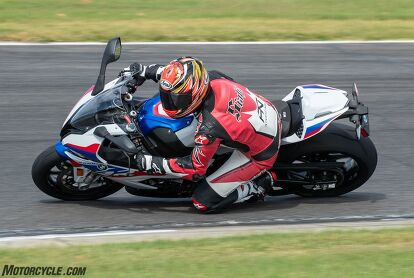
Helmet: Arai Corsair X Nakagami $980
- Suit: Custom Alpinestars Suit NA
- Gloves: Alpinestars GP Pro R3 $260
Boots: Alpinestars Supertech-R $500
2020 BMW S1000RR Specifications | |
|---|---|
| MSRP | $16,995 (Base), $22,095 (As-tested) |
| Engine | 4-stroke, 4-cylinder, DOHC, 16-valve, liquid-cooled, four titanium valves per cylinder, BMW Shiftcam |
| Displacement | 999cc |
| Bore x Stroke | 80.0 x 49.7mm |
| Compression Ratio | 13.3:1 |
| Fuel System | Electronic fuel injection with ride-by-wire throttle system, variable intake, and knock sensor |
| Transmission | 6-speed, constant mesh w/straight cut gears. Multi-disc clutch in oil bath, anti-hopping clutch, mechanically operated |
| Final Drive | Sealed chain |
| Electronic Rider Aids | DTC torque control, DTC wheelie control, DTC traction control, Engine braking, ride modes, Dynamic Brake Control, Hill Start Control Pro, LED headlight, multifunction turn signal/brake light |
| Frame Type | Twin-spar aluminum |
| Front Suspension / Wheel Travel | 45mm inverted Marzocchi fork with rebound and compression damping, manual spring preload adjustability, Dynamic Damping available; 4.7 inches of travel |
| Rear Suspension / Wheel Travel | “WSBK” Aluminum swingarm, full floater pro, compression and rebound damping adjustable, adjustable preload, Dynamic Damping available; 4.6 inches of travel |
| Front Tire | 120/70 ZR-17 |
| Rear Tire | 190/55 ZR17 |
| Front Brakes | Dual 320mm discs with four-piston calipers, Dynamic Brake Control available |
| Rear Brakes | Single 220mm disc with single-piston caliper, Dynamic Brake Control available |
| Rake/Trail | 23.5°/3.7 inches |
| Overall Length | 81.6 inches |
| Overall Width | 33.4 inches (including mirrors) |
| Overall Height | 45.3 inches (excluding mirrors) |
| Seat Height | 32.4 inches |
| Wet Weight (claimed) | 434 lbs (427 lbs w/M Package) |
| Fuel Capacity | 4.4 gallons |
| Fuel Economy | 37 mpg (claimed) |
| Wheelbase | 56.7 inches |
| Color Choices | M Package: Light White/Racing Blue/Racing Red. Standard: Racing Red |

Troy's been riding motorcycles and writing about them since 2006, getting his start at Rider Magazine. From there, he moved to Sport Rider Magazine before finally landing at Motorcycle.com in 2011. A lifelong gearhead who didn't fully immerse himself in motorcycles until his teenage years, Troy's interests have always been in technology, performance, and going fast. Naturally, racing was the perfect avenue to combine all three. Troy has been racing nearly as long as he's been riding and has competed at the AMA national level. He's also won multiple club races throughout the country, culminating in a Utah Sport Bike Association championship in 2011. He has been invited as a guest instructor for the Yamaha Champions Riding School, and when he's not out riding, he's either wrenching on bikes or watching MotoGP.
More by Troy Siahaan



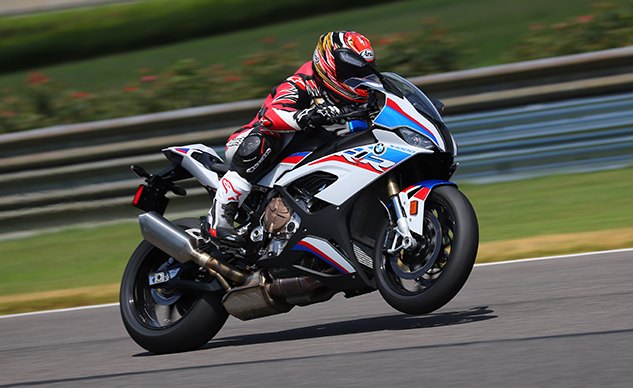




















































































































































































































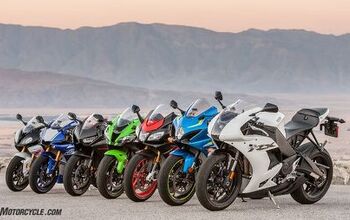


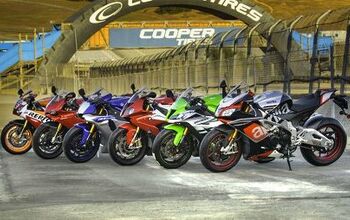

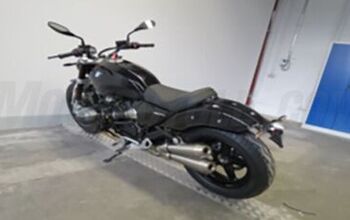










Comments
Join the conversation
Thanks for the honest review. Motorcycle.com really stands out more and more all the time.
As soon as I read that this bike is a vibrator... sorry, I won't spend 20k on a bike with a vibro engine.